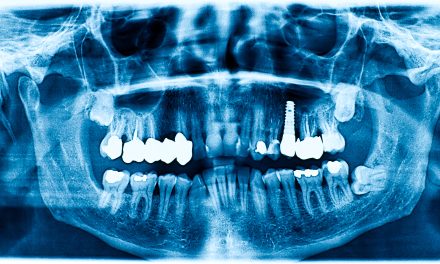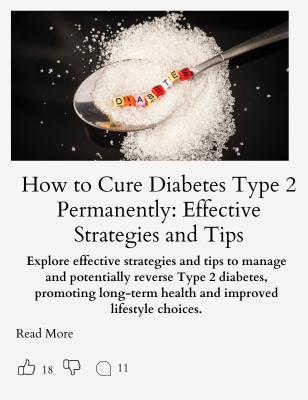Achieving a brighter smile quickly is a common desire for many people, and there are several ways to whiten teeth effectively in a short period of time. Rapid teeth whitening methods range from at-home remedies to professional treatments, each varying in their approach, cost, and results. Understanding the causes of tooth discoloration is crucial as it helps in selecting the most appropriate whitening method. Factors such as diet, oral hygiene, and certain habits contribute to tooth stains, while some discoloration is due to aging or medications.
Usually, the fastest results are obtained from professional teeth whitening services offered by dentists, which can make teeth several shades brighter in just one session. For those looking for immediate at-home options, whitening products containing hydrogen peroxide or other bleaching agents can be potent allies in battling stains. However, it’s important to balance the desire for quick results with the consideration for dental health, as some methods may increase tooth sensitivity or irritate gums.
Key Takeaways
- Various methods, from at-home remedies to professional treatments, can whiten teeth quickly.
- Selecting a whitening technique should consider the cause of tooth discoloration and individual oral health.
- Safety and maintaining dental health are as important as achieving immediate whitening results.
Understanding Tooth Discoloration
Before attempting to whiten teeth, it’s important to understand why discoloration occurs. Tooth discoloration can be the result of various factors, ranging from the foods and beverages consumed to the natural process of aging.
Types of Tooth Stains
Tooth discoloration is typically categorized into two types: extrinsic and intrinsic stains. Extrinsic stains appear on the surface of the teeth and are commonly caused by external substances, like certain foods and beverages. They are often the result of consuming tea, coffee, or red wine and using tobacco products. In contrast, intrinsic stains form below the enamel layer and can result from trauma, overexposure to fluoride during childhood, certain medications, or as a natural consequence of aging where the enamel thins and more of the yellowish dentin shows through.
Common Causes of Discoloration
There are numerous causes of tooth discoloration, some of which include:
- Foods and Beverages: Dark-colored foods and drinks such as berries, tea, and coffee are notorious for staining teeth.
- Tobacco Use: Both chewing and smoking tobacco can contribute to yellowed or brown-stained teeth.
- Dental Hygiene: Inadequate brushing and flossing can lead to the buildup of plaque and tartar, which can cause teeth to look discolored.
- Aging: As a person ages, the outer layer of enamel wears away, revealing the naturally yellow color of dentin.
Each of these causes affects teeth differently, and understanding the origin of discoloration is essential for effective whitening treatments.
Daily Practices for Whiter Teeth
Maintaining a brighter smile involves consistent dental hygiene practices. The focus is on thorough brushing and regular flossing, key components in combating surface stains and ensuring overall oral health.
Proper Brushing Techniques
One should select a toothbrush with soft bristles and brush at least twice a day, each session lasting two minutes. Brushing should be done using a gentle, circular motion to effectively remove plaque without causing enamel abrasion. This helps to prevent yellowing and maintains tooth integrity.
The Role of Flossing
Flossing once a day is crucial for removing plaque and food particles from between the teeth, areas where a toothbrush can’t reach. Consistent flossing helps to prevent gum disease, which contributes to discoloration, and it also plays a role in achieving brighter teeth. Regular dental cleanings complement daily flossing to ensure a whiter smile.
Choosing the Right Whitening Products
The marketplace offers several solutions to brighten one’s smile quickly. Each category of whitening product is designed with specific features to cater to different needs and preferences. It’s essential to understand what each type offers to make an informed decision.
Whitening Toothpaste
Whitening toothpaste is an accessible and convenient option for daily use. They help remove surface stains and can include ingredients like hydrogen peroxide for gradual whitening effects. Colgate Optic White Renewal is a popular choice endorsed by dental professionals, which claims to contain a high level of hydrogen peroxide compared to other over-the-counter options.
Teeth Whitening Kits and Pens
Teeth whitening kits often deliver more noticeable results in shorter periods due to their higher bleaching agent concentrations. Crest 3D Whitestrips Professional Effects is an example of a leading at-home kit providing professional-level whitening results. Teeth whitening pens offer precision for on-the-go touch-ups, with some products promising visible effects after just a few days of consistent application.
Whitening Mouthwash
As an adjunct to daily oral hygiene, whitening mouthwashes can support the maintenance of post-treatment results. They typically contain lower concentrations of whitening agents than pastes or kits. These rinses can also sustain the benefits of previous whitening treatments, although they are generally less effective for significant color changes alone.
Professional Teeth Whitening
When looking for rapid and noticeable results, professional teeth whitening treatments provided by dentists offer some of the most effective methods. These procedures typically use high concentrations of bleaching agents like hydrogen peroxide to remove stains and lighten the color of teeth.
In-Office Bleaching Procedures
In-office bleaching procedures are conducted under the careful supervision of a dentist, ensuring effectiveness and safety for the patient. During these treatments, a potent bleaching gel containing a higher concentration of hydrogen peroxide is applied to the teeth. Advanced techniques may involve lasers or LED teeth whitening systems to accelerate the bleaching process, offering visible results in just one session.
- Laser Teeth Whitening: Utilizes concentrated light to enhance the whitening process for fast results.
- LED Teeth Whitening: Employs a milder light source to activate the bleaching agent with reduced sensitivity.
The cost of in-office bleaching can be higher than at-home kits. Still, the immediate results and professional oversight make it a preferred option for many seeking quick whitening.
Custom Whitening Trays
Dentists can provide custom whitening trays for those who prefer the convenience of whitening their teeth at home. These trays are personalized to fit the unique contours of the patient’s mouth, which helps achieve even application of the bleaching gel. The treatment course may span a few weeks, with the patient applying the gel for specified durations each day.
- Bleaching Agent: Trays typically come with a reputable brand of bleaching gel that ensures both efficiency and safety.
- Dental Cleanings: It’s advisable to undergo professional dental cleanings before using custom trays to maximize the whitening effect.
While the cost for custom trays is generally lower than in-office procedures, they are still more expensive than over-the-counter options yet provide better results due to the customized fit and professional-grade bleaching agents.
At-Home Teeth Whitening Methods
Achieving a brighter smile can be accomplished through various at-home teeth whitening methods. These methods range from over-the-counter products like whitening strips and gels to homemade pastes that utilize common household ingredients.
Whitening Strips and Gels
Whitening strips and gels are popular products that offer a convenient at-home solution. Whitening strips are thin, flexible plastic (polyethylene) strips with a thin film of hydrogen peroxide on one side. Applying the strip to the front teeth typically requires adherence to a strict schedule, often twice daily for 30 minutes to an hour, over several days or weeks. On the other hand, whitening gels contain a peroxide-based gel that is applied to the tooth surface with a small brush. Their application recommendations can vary, so one should follow the directions on the product carefully.
Homemade Whitening Pastes
Alternatively, some individuals prefer creating their homemade whitening pastes using ingredients like baking soda and hydrogen peroxide. A simple paste can be made by mixing a small amount of baking soda with water or hydrogen peroxide and then gently brushing the teeth with the mixture. Additionally, anecdotal claims suggest that rubbing the inside of a banana peel on teeth or using a medicine involving strawberries and apple cider vinegar can lead to whiter teeth. However, these natural remedies lack scientific solid backing and may be less effective than commercial products. It’s important to note that overuse of acidic substances, such as apple cider vinegar, can erode tooth enamel over time.
The Science of Whitening Agents
Teeth whiteners commonly rely on active ingredients like hydrogen peroxide or carbamide peroxide to effectively lift stains from the surfaces of teeth. These agents work at a molecular level, producing oxygen molecules that break down discolored compounds within the tooth enamel.
Hydrogen Peroxide vs. Carbamide Peroxide
- Hydrogen Peroxide: This is a powerful oxidizing agent that acts quickly upon application to break the chemical bonds of the compounds, causing discoloration in the teeth. Products with hydrogen peroxide typically yield faster results but can also lead to sensitivity due to its potency.
- Carbamide Peroxide: On the other hand, carbamide peroxide releases hydrogen peroxide at a slower rate. A combination of hydrogen peroxide with urea, carbamide acts over a longer duration which can reduce the likelihood of tooth sensitivity making it a gentler option for many users.
Both agents penetrate the porous enamel to reach discolored molecules, but the concentration and time required to achieve desired whitening results can vary significantly between the two.
Natural Remedies for Teeth Whitening
When seeking a brighter smile, many turn to natural remedies that are simple to use and readily available at home. These techniques can often be gentler on the enamel than commercial whitening agents.
Oil Pulling with Coconut Oil
Oil pulling has an ancient origin and involves swishing a tablespoon of oil in the mouth for 15 to 20 minutes. The oils typically used include coconut, sesame, or sunflower oil. Specifically, coconut oil pulling can draw out bacteria and reduce stains on the teeth, contributing to a whiter appearance. This method should be done several times a week for best results.
Fruit Enzymes and Acids
Fruits like pineapple and strawberries contain natural enzymes and acids that may aid in teeth whitening. An enzyme called bromelain, found in pineapple, has been recognized for its stain-removing abilities. Similarly, the malic acid in strawberries can help lift surface stains. However, using these fruit remedies cautiously is essential, as excessive use of acids can damage tooth enamel. A popular method involves mashing strawberries to create a paste or brushing softly with fresh pineapple, but these should be used occasionally rather than daily.
Maintaining Your Smile Post-Whitening
After whitening your teeth, it’s essential to implement strategies to preserve the brightness of your smile. This involves changing your daily consumption habits and adhering to routine dental care practices.
Diet and Lifestyle Adjustments
Smoking: One of the foremost measures to maintain whitened teeth is to avoid smoking. Smoking can rapidly stain teeth, diminishing the effects of whitening treatments.
Diet: Consideration of one’s diet plays a crucial role as well. It is beneficial to consume foods that are less likely to cause stains. For example, high-fiber fruits and vegetables can help clean teeth naturally while eating.
Foods and Beverages: Some foods and beverages can promote staining. Avoid or limit substances like coffee, red wine, tea, and dark berries. Using a straw can help minimize contact with the teeth when consuming acidic drinks, reducing the risk of enamel erosion and staining.
Routine Dental Care
Dental Hygiene: Proper dental hygiene is imperative for maintaining your smile. This entails brushing twice daily, flossing daily, and using mouthwash to aid in fresher breath and additional cleaning.
Dental Cleanings: Regular dental check-ups and professional dental cleaning sessions are highly recommended. These keep oral health in check and can remove superficial stains that daily brushing might miss.
By embracing these diet and lifestyle adjustments and committing to routine dental care, individuals can enjoy a whiter, brighter smile for extended periods.
Risks and Considerations
When seeking fast teeth whitening solutions, it is crucial to consider the potential risks and their impact on one’s oral health. Immediate methods often involve potent bleaching agents that can lead to tooth sensitivity and affect gum health. It’s also important to consider how these treatments interact with existing dental work.
Tooth Sensitivity and Gum Health
Rapid teeth whitening procedures can cause increased tooth sensitivity due to high bleaching agents like hydrogen peroxide concentrations. This sensitivity often manifests as a sharp, temporary pain triggered by hot, cold, or sweet stimuli. Additionally, the whitening agents can lead to gum inflammation, mainly if the substances come into prolonged contact with the soft tissue. To minimize sensitivity, some products contain ingredients such as potassium nitrate to mitigate this side effect. Many safe choices are available to help whiten teeth, aiming to reduce discomfort while achieving the desired whitening effect.
Impact on Dental Work
It’s necessary to consider how whitening treatments can affect dental restorations such as crowns, veneers, and bonding. Typically, these materials do not respond to bleaching agents like natural teeth do, which can result in uneven coloration. Patients with restorations should also know that the whitening process might not reverse discoloration caused by cavities or tooth decay. Before choosing a quick whitening method, they should consult a dental professional to avoid unforeseen complications. Teeth Whitening Guide provides insights into selecting the best treatment according to individual needs and the staining one is dealing with.
Whitening Treatments and Oral Health
When considering rapid tooth whitening methods, it’s crucial to weigh their effects on overall dental health, particularly the integrity of tooth enamel and the prevention of decay.
Prevention of Tooth Decay and Diseases
Rapid whitening treatments, such as those involving bleaching agents like hydrogen peroxide, can sometimes be too harsh, risking enamel degradation. This outer layer of tooth enamel serves as the sturdy protector of the dentin beneath, which houses sensitive nerve endings. Ensuring that a whitening solution does not weaken enamel is essential in maintaining oral health and preventing cavities.
In addition to evaluating the impact on enamel, one should consider the role of such treatments in the broader context of dental hygiene. Effective whitening must work with regular brushing and flossing to remove plaque, a sticky film of bacteria that can cause gingivitis or more severe conditions if not managed.
Choosing toothpaste infused with fluoride fortifies teeth against decay by remineralizing enamel and aiding in the defense against surface stains and cavities. Fluoride also contributes to overall dental health by working to prevent or slow the progression of early signs of tooth decay.
Regular dental check-ups can ensure that whitening treatments are cosmetic and beneficial to oral health. Dental professionals can guide patients in selecting safe and effective methods that minimize the risks associated with aggressive whitening protocols, which could otherwise lead to increased tooth sensitivity or, in more severe cases, irreversible damage to the enamel.
Ultimately, while pursuing a brighter smile is understandable, it should never come at the expense of oral health, including the crucial tasks of safeguarding against tooth decay and diseases such as gingivitis. Proper dental hygiene regimen and regular professional oversight should be the foundation of any whitening endeavor.
Setting Realistic Expectations
Before seeking ways to whiten your teeth, it’s essential to understand the inherent limitations and the realistic duration of any whitening results achieved. Knowing these aspects can aid in setting achievable goals for whitening your teeth.
Limitations of Teeth Whitening
Teeth whitening can significantly lighten the color of your teeth, but there are boundaries to its effectiveness. Not all types of tooth discoloration respond equally to whitening treatments. Intrinsic stains, such as those caused by medications or aging, may not be fully correctable through typical whitening methods. In contrast, extrinsic stains from food, drinks, or smoking usually show better results. Additionally, restorations like fillings and crowns will not respond to whitening, which may lead to uneven color if present.
Longevity of Whitening Results
The duration of whitening results can vary widely, depending on the individual’s dietary habits and oral hygiene. Whitening is not a permanent solution; external factors such as consuming staining substances and natural aging can gradually diminish the effect. To maintain whiter teeth longer, one might need to avoid certain foods and beverages or use maintenance whitening products periodically. Regular dental check-ups and cleanings also help preserve the brightness achieved through whitening treatments.
Frequently Asked Questions
When looking to illuminate your smile quickly, it’s crucial to understand the most effective methods and products for teeth whitening and their safety and potential for instant results.
What are the most effective teeth-whitening toothpaste options?
Effective teeth-whitening toothpaste options typically contain abrasives that help remove surface stains and polishing agents that provide a brighter smile. Products like Pronamel are specifically formulated to help whiten teeth by polishing the enamel without causing damage.
Which teeth whitening kits offer the fastest results?
Whitening kits that use a higher concentration of peroxide and come with a form of light to activate the gel often offer fast results. Some over-the-counter options promise visible improvements in a matter of days.
What professional treatments provide the quickest teeth whitening?
Professional treatments performed by a dentist, such as laser whitening or bleaching sessions, usually provide the quickest and most noticeable results. These treatments can make the teeth’ shades lighter in a single visit.
Is it possible to whiten teeth instantly with household products like baking soda?
While some household products like baking soda can improve the whiteness of your teeth over time by removing surface stains, it’s important to note that they will not provide instant results.
What are the safest ways to whiten teeth without causing enamel damage?
The safest ways to whiten teeth involve using ADA-approved whitening toothpaste, at-home kits with lower peroxide concentrations, or visiting a dental professional to ensure the procedures do not harm the enamel.
How can I naturally reverse the yellowing of teeth for a whiter smile?
Reversing yellowing naturally involves maintaining good oral hygiene, avoiding stain-causing foods and beverages, and using natural whiteners like activated charcoal or apple cider vinegar in moderation, which may help to brighten the teeth gradually.



















